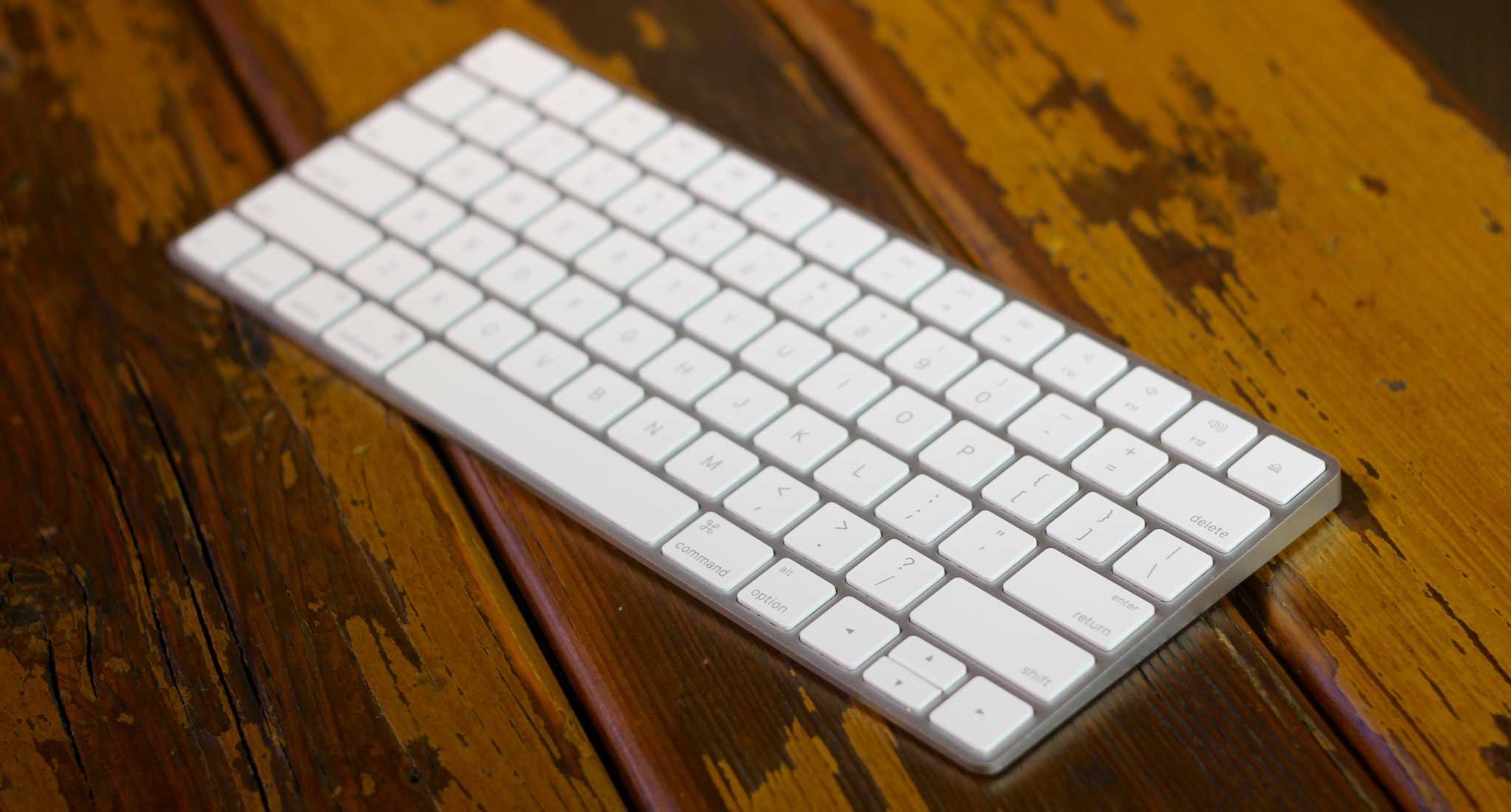
By Jason Snell
October 13, 2015 5:31 AM PT
Last updated November 19, 2021
Apple Magic Keyboard Review
Note: This story has not been updated since 2021.
I’m on the record as not being a fan of the new MacBook’s keyboard, but as a compromise in order to get that laptop to be as thin and light as possible, it at least makes sense. The fear I had was that Apple would decide that the work it had done on the MacBook keyboard shouldn’t be limited to that product, and the result would be that a design fit for a tiny laptop would spread across every Mac.
If nothing else, the new $99 Magic Keyboard1 seems to suggest that the keyboard dystopia I fear won’t come to be. This is a second new keyboard design from Apple in a year, and this one’s a lot more mainstream: It eschews the butterfly mechanism on the MacBook keyboard for a more traditional scissor mechanism, albeit one that Apple says has been tweaked to provide one of the features of the MacBook keyboard: improved key stability. The key caps are slightly larger, but the overall layout of the keyboard is pretty much the same as on all Apple keyboards since the last major Apple keyboard redesign back in 2007.

The major key differences are the left and right arrow keys, which are now full-sized—I used the empty space around the arrows to orient on the keyboard, so occasionally I find myself completely at sea when typing and my text editor will get xinikerejt xibdyaws. (I’m sure I’ll adjust.) The function keys, formerly half height, are now full height.
Like the new mouse and trackpad released by Apple today, the Magic Keyboard ditches the AA batteries of the older model for an internal, rechargeable lithium-ion battery. As a result, the hump at the top of the keyboard is gone, reducing the border around the keyboard to a few millimeters, the overall footprint of the keyboard by 13 percent, and the pitch of the keyboard by half. Less pitch on a keyboard is a good thing—a keyboard that slopes up forces you to bend your wrists, which is pretty bad form ergonomically speaking.

How to charge this new rechargeable keyboard, then? There’s a small lightning port on the back edge of the keyboard, and Apple includes a USB-to-lightning cable to charge it. According to Apple, the battery inside the Magic Keyboard will last “a month or more,” which is a darn sight longer than the Logitech rechargeable keyboard I’ve been using the last couple of years.

Apple has also built a neat trick into all of its new input devices, including the Magic Keyboard. When you connect them to a Mac running El Capitan via the USB-to-Lightning cable, they automatically pair with that Mac. No Bluetooth pairing two-step required; the whole thing is fast and easy.
The Magic Keyboard’s key travel is about 1mm, less than that on the old Apple keyboards. But typing on it feels much better than the MacBook’s keyboard did. It’s hard to explain typing feel in words, and people can have dramatically different tastes when it comes to keyboards. In general, I’d say I like it. It may well be better than the older model, but it’s definitely different. There’s less travel, but more key stability. The reduction in key travel didn’t bother me; in fact, when I went back to my Logitech keyboard, it felt really weird. I’m starting to think that either I need to switch to the Magic Keyboard or just go all the way back to a mechanical keyboard with insane amounts of travel and loud clicky noises.
People who love those kind of keyboards won’t like this any more than the last Apple model, but as modern, compact laptop-style keyboards go, this one feels fine and looks great. (I’ve made a brief and somewhat blurry video which includes audio of the new keyboard compared to the previous model Apple keyboard, so check that out if you want more on this subject.)
Unfortunately, one feature that would probably have made a lot of people happy—and also probably would’ve killed that month-long battery life—would be keyboard backlighting. This keyboard doesn’t have it, so if you’re in the market for that sort of thing, look elsewhere. Maybe my Logitech Easy Switch keyboard will satisfy you.
Apple doesn’t have the luxury to design a bunch of keyboards to fill different niches. Between this design, the MacBook keyboard, and that crazy fabric keyboard for the iPad Pro, we’re probably looking at Apple’s entire keyboard design output for the next five to ten years. Seen in that context, the Apple Magic Keyboard is exactly what was required: a solid keyboard that will work for most people. The rechargeability, battery life, reduced keyboard pitch, and plug-in pairing all contribute to making this a keyboard we can live with until sometime in the 2020s, if they’re still making keyboards then.
- Why is it “Magic”? I don’t know, but it does turn out that if you plug it in via its included Lightning-to-USB cable, you can turn off Bluetooth and it still works fine, sending its data via USB. ↩
If you appreciate articles like this one, support us by becoming a Six Colors subscriber. Subscribers get access to an exclusive podcast, members-only stories, and a special community.

